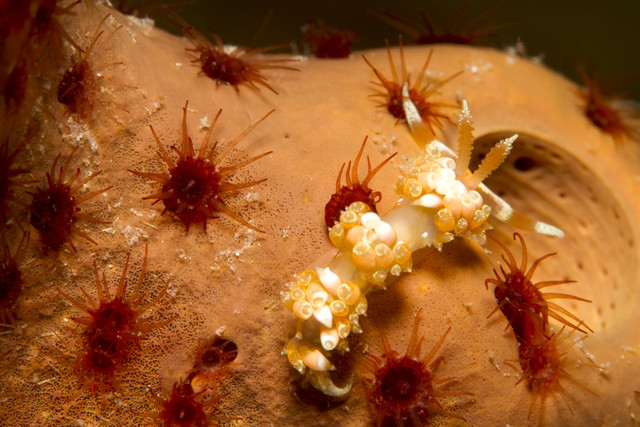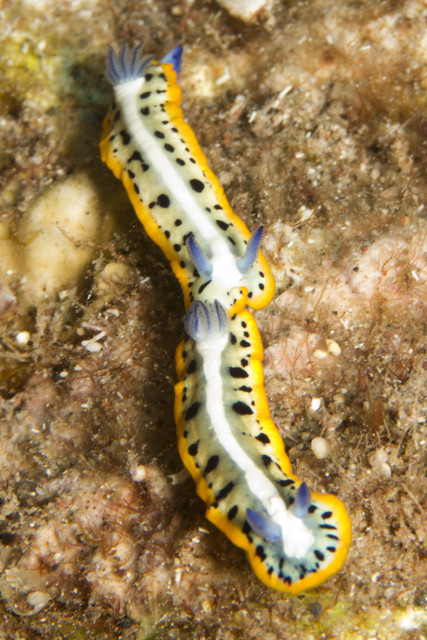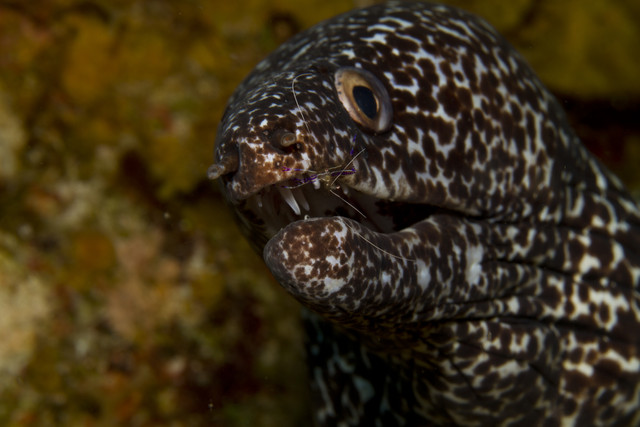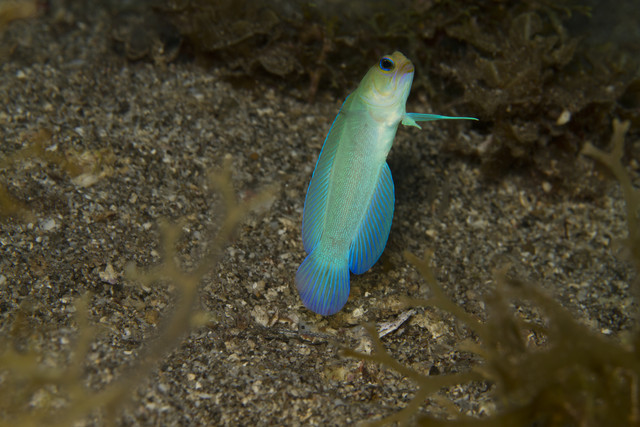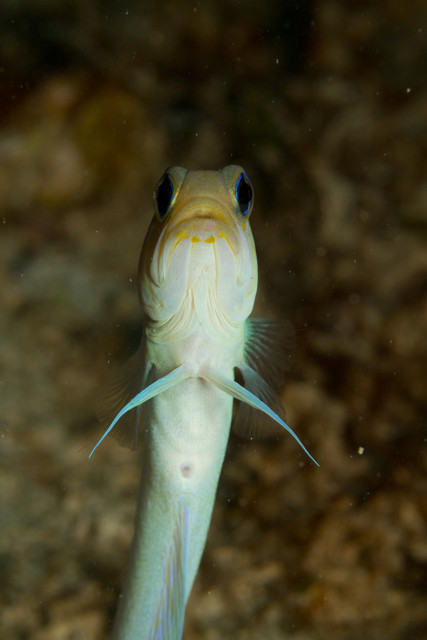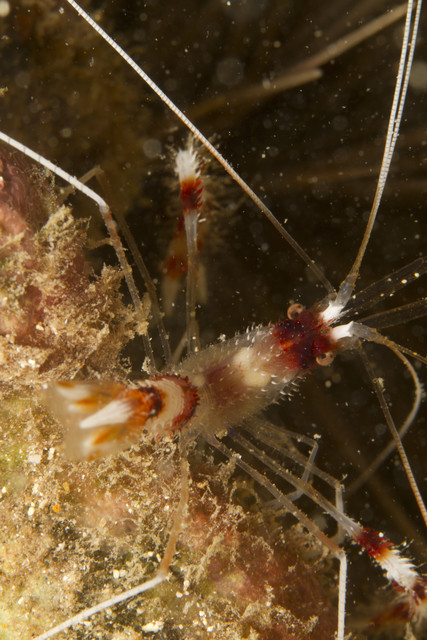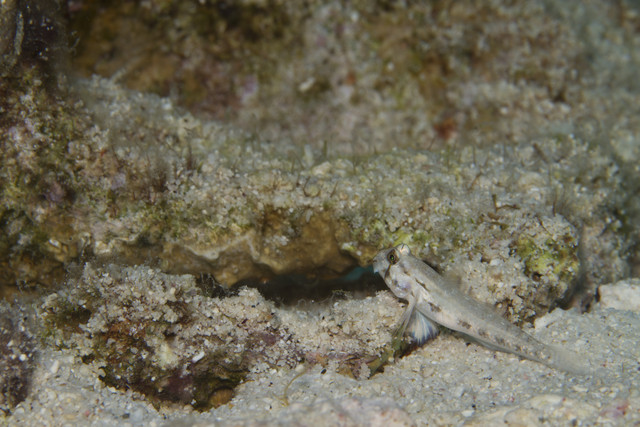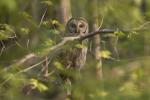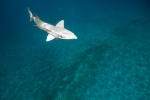underwater
Caribbean Explorer: Long-Horn Nudibranch
ktuli — Tue, 10/25/2011 - 21:55
More nudibranchs today... this is a Long-Horn Nudibranch (Austraeolis catina).
Technical Data: Canon EOS 7D, Canon EF 100mm f/2.8L Macro IS USM, 1/120th sec at f/16. Image Stabilization on. ISO 200. Ikelite Housing and Port with Ikelite 161 Strobe in TTL Mode. Raw conversion in Photoshop CS5.
- Bill
Caribbean Explorer: Another Caribbean Reef Octopus
ktuli — Mon, 10/24/2011 - 18:03
Alright - just stopping by to share another shot of a Caribbean Reef Octopus - this time showing off a bit of how they are able to change their skin texture to mimic their environment - in this case some sargassum
Technical Data: Canon EOS 7D, Canon EF 100mm f/2.8L Macro IS USM, 1/120th sec at f/16. Image Stabilization on. ISO 100. Ikelite Housing and Port with Ikelite 161 Strobe in TTL Mode. Raw conversion in Photoshop CS5.
Don't worry - there are plenty more good octopus shots to share, so this won't be the last...
- Bill
Caribbean Explorer: Purple-Crowned Sea Goddess Nudibranchs
ktuli — Sat, 10/22/2011 - 19:46
Well - if they're to be found, you had to know I'd get some photos of nudibranchs. While there wasn't as wide of an assortment as Wakatobi, I did end up seeing at least four species. However, without a doubt, this pair was the highlight of the trip in terms of nudis.
This is a pair of Purple-Crowned Sea Goddess (Chromodoris or Mexichromis kempfi).
At first, I thought this behavior may have been mating, but as it turns out, nudibranchs have their sexual organs on the right side of their head, so they would have had to have been side by side, not single file like this. It is possible that this trailing behavior is a prelude to mating, but it still seems uncommon (though, I've been able to find several other photos of this species exhibiting this trailing behavior).
None-the-less, I was told by our dive masters on the trip that this species of nudibranch is pretty rare to see in that area. Ad considering I was the one to find them (actually, only Anya and I got to see them during the dive as we were at the end of the group, and everyone else had moved on).
Technical Data: Canon EOS 7D, Canon EF 100mm f/2.8L Macro IS USM, 1/120th sec at f/16. Image Stabilization on. ISO 100. Ikelite Housing and Port with Ikelite 161 Strobe in TTL Mode. Raw conversion and cropped in Photoshop CS5.
The original shot (mouseover to see) was very nicely done, but I also felt it would benefit from a nice tight crop to fille the frame with just the nudis.
I'll be sharing some of the others both of these two and of the other species we saw soon.
- Bill
Caribbean Explorer: Bearded Fireworm
ktuli — Wed, 10/19/2011 - 19:42
Today's subject was so abundant on the reefs on this trip, that I literally got tired of trying to take photos of them. Their bristle-like hairs really played havoc on the camera's focus and exposure systems. They also never stopped moving - though they didn't swim around quickly like a fish, they did have a continuous methodical movement that made them a bit difficult to work with. I managed plenty of good shots of them none-the-less, and by the end of the week, I would just swim right on past them unless it was a really interesting individual. This one in particular was sitting on a bright orange sponge that matched its color pretty well, and I was able to time a shot pretty well to get it crawling over the edge of the sponge and in a nice composition.
They are called Bearded Fireworms (Hermodice carunculata) and get their name from those tufts of white bristles all along their length. The bristles are supposedly like getting bits of fiberglass under your skin - painful, irritating, and itchy. I saw ones as small as a half inch, all the way up to about eight inches; they also ranged in color from this bright reddish orange shown here, to yellow, red, green, brown, and even white.
This particular specimen I liked because of the nice combination of orange on orange, and then add in that the white bristles made it look like it was glowing or other-worldly, and I couldn't pass up taking this shot.
Technical Data: Canon EOS 7D, Canon EF 100mm f/2.8L Macro IS USM, 1/120th sec at f/16. Image Stabilization on. ISO 100. Ikelite Housing and Port with Ikelite 161 Strobe in TTL Mode. Raw conversion in Photoshop CS5.
If you're getting tired of the dive photos, tune in tomorrow as I'm going to take a little break and share some shots I took of my father-in-law's small robot sculptures.
- Bill
Caribbean Explorer: Reef Dentistry
ktuli — Tue, 10/18/2011 - 19:12
You know - when you get something stuck in your teeth, it is so easy to just grab a toothpick and take care of that. But what about when you're 40ft underwater? And what about if you're an eel, and you have no arms?
Well, there's a solution for that too...
Just make a visit to your friendly neighborhood cleaning station. This particular one is operated by a Pederson's Cleaner Shrimp (Periclimenes pedersoni).
This Spotted Moray Eel (Gymnothorax moringa) apparently needed to have something removed from those large fangs, and didn't mind posing for me while doing so.
Mouseover the image for a cropped version showing the Pederson's Shrimp at work.
Technical Data: Canon EOS 7D, Canon EF 100mm f/2.8L Macro IS USM, 1/120th sec at f/16. Image Stabilization on. ISO 100. Ikelite Housing and Port with Ikelite 161 Strobe in TTL Mode. Raw conversion in Photoshop CS5.
I have plenty more shots of eels and shrimp separately, but capturing this kind of reef behavior is always a special treat.
- Bill
Caribbean Explorer: Yellowhead Jawfish
ktuli — Mon, 10/17/2011 - 19:39
Ok - don't feel much like typing, so here's a double dose of a Yellowhead Jawfish (Opistognathus aurifrons).
Technical Data: Canon EOS 7D, Canon EF 100mm f/2.8L Macro IS USM, 1/120th sec at f/16. Image Stabilization on. ISO 100. Ikelite Housing and Port with Ikelite 161 Strobe in TTL Mode. Raw conversion in Photoshop CS5.
Technical Data: Canon EOS 7D, Canon EF 100mm f/2.8L Macro IS USM, 1/120th sec at f/16. Image Stabilization on. ISO 100. Ikelite Housing and Port with Ikelite 161 Strobe in TTL Mode. Raw conversion in Photoshop CS5.
Enjoy!
- Bill
Caribbean Explorer: Banded Coral Shrimp
ktuli — Sun, 10/16/2011 - 20:40
I'm a sucker for all those tiny reef invertebrates. Shrimp are among my favorites, and I've often seen Banded Coral Shrimp (Steopus hispidus) in the pet trade. So it is quite fun to see them in their natural habitat. Fortunately, I got to see plenty of them on the reefs on this trip.
Technical Data: Canon EOS 7D, Canon EF 100mm f/2.8L Macro IS USM, 1/120th sec at f/16. Image Stabilization on. ISO 100. Ikelite Housing and Port with Ikelite 161 Strobe in TTL Mode. Raw conversion in Photoshop CS5.
Since I got to see so many of them, I'll surely be sharing some more shots of them in the future.
- Bill
Caribbean Explorer: Caribbean Reef Octopus Variety Pack
ktuli — Fri, 10/14/2011 - 16:25
Ok - it took Anya and I four dive trips to finally get to see an octopus. Fortunately, we saw plenty of octopodes on this trip, so I got plenty of good shots. So rather than spend more time typing, I'll just share a handful of shots from our first night dive where we had out first real octopus encounter (technically we saw some during the afternoon dives, but they were hiding, so it doesn't count like this).
This is a Caribbean Reef Octopus (Octopus briareus), which you can tell by that fantastic coloration of bluish-green mottled with reddish-brown.
Mouse-over the thumbnails to view the larger image.
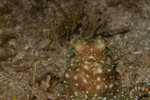 |
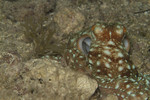 |
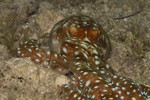 |
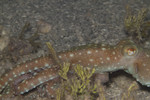 |
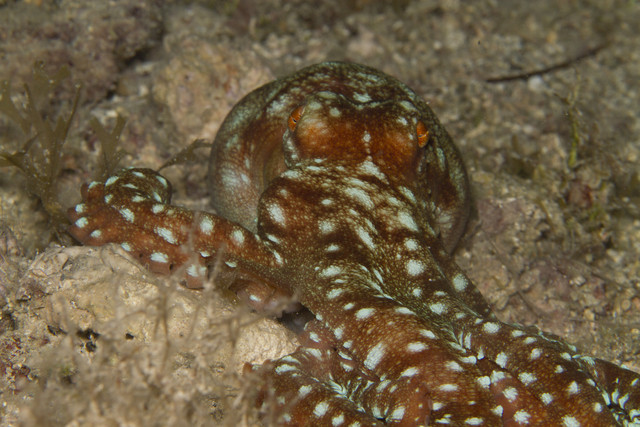
|
Technical Data: Canon EOS 7D, Canon EF 100mm f/2.8L Macro IS USM, 1/120th sec at f/16. Image Stabilization on. ISO 100. Ikelite Housing and Port with Ikelite 161 Strobe in TTL Mode. Raw conversion in Photoshop CS5.
That alone was worth the price of admission!
- Bill
Caribbean Explorer: Unidentified Blenny
ktuli — Thu, 10/13/2011 - 19:09
We'll continue today with the tiny little reef fish. Like yesterday's Goldspot Goby, if you slow down and pay attention, these diminutive fish are quite numerous just about everywhere you look on the reef.
At first, I thought today's fish was a Secretary Blenny (Acanthemblemaria maria), but after looking more closely, I'm not so sure. It is definitely in the Blenny family (Acanthemblemaria spp.), but it is lacking the yellow irises and white bar behind the eyes that the Secretary Blennies possess.
Regardless, the behavior is the same - each seems to live in the holes in corals and sponges that are left by various worms. They usually sit in these holes with just their heads protruding, until a morsel of food drifts by, then they dart out, grab the food, and then return to their hole with lightning speed.
Technical Data: Canon EOS 7D, Canon EF 100mm f/2.8L Macro IS USM, 1/120th sec at f/16. Image Stabilization on. ISO 100. Ikelite Housing and Port with Ikelite 161 Strobe in TTL Mode. Raw conversion in Photoshop CS5.
Looking at the EXIF data, this shot was taken at the lens' minimum focusing distance, which produces a 1:1 magnification. That means that the image is 22.3mm x 14.9mm, which makes that fish pretty darn tiny.
Just another treasure of the reef if you know where to look.
- Bill
Caribbean Explorer: Goldspot Goby
ktuli — Wed, 10/12/2011 - 20:24
Ok - till slogging my way through hundreds of RAW conversions, so just stopping by tonight to post another quick shot. Today, we have a Goldspot Goby (Gnatholepis thompsoni). These are small little fish - about an inch or two max, that live on the sandy bottoms of the reef. If approached slowly, they will sometimes sit nicely like this little fellow and allow for a decent photo.
Technical Data: Canon EOS 7D, Canon EF 100mm f/2.8L Macro IS USM, 1/120th sec at f/16. Image Stabilization on. ISO 100. Ikelite Housing and Port with Ikelite 161 Strobe in TTL Mode. Raw conversion in Photoshop CS5.
Stay tuned! The octopodes are coming soon!
- Bill

